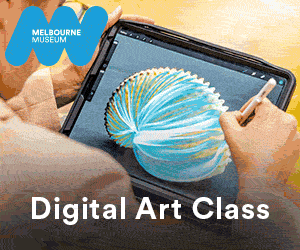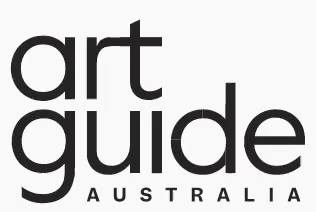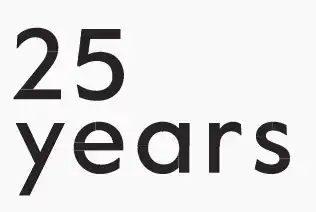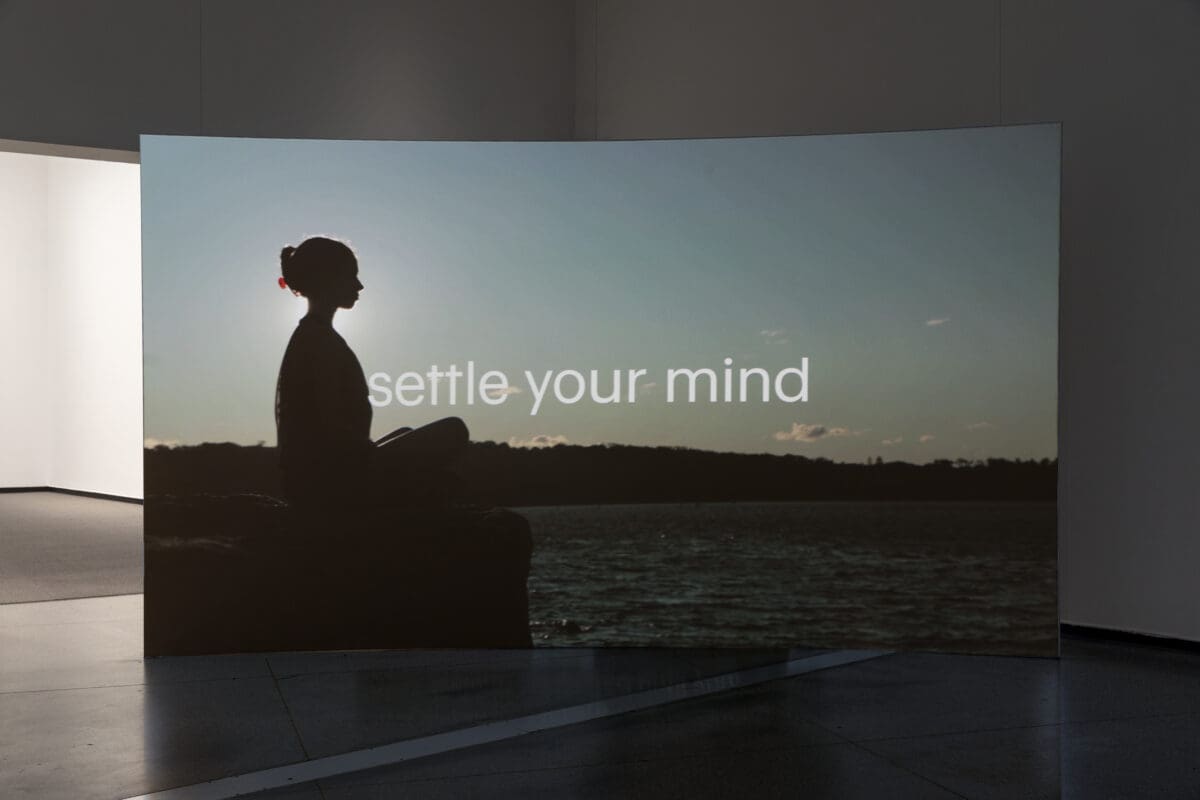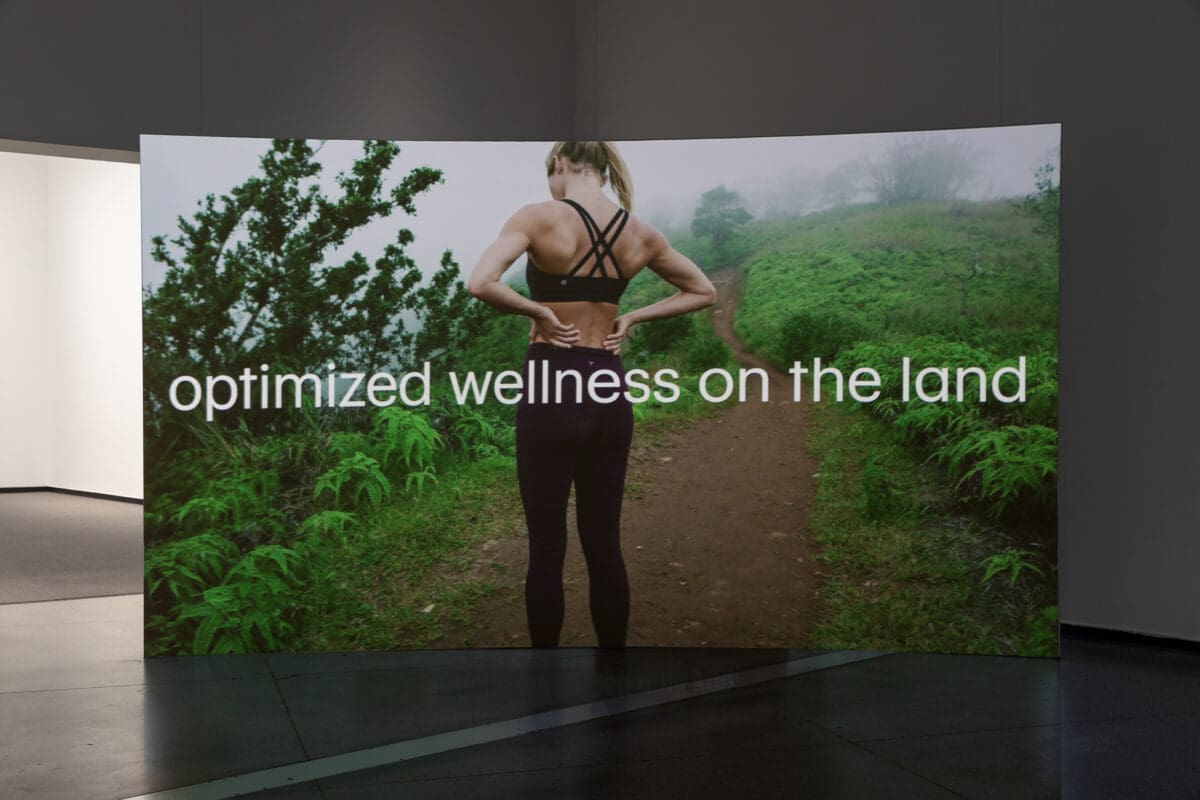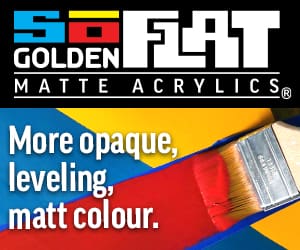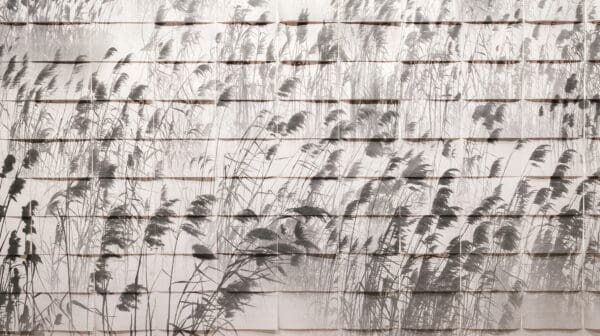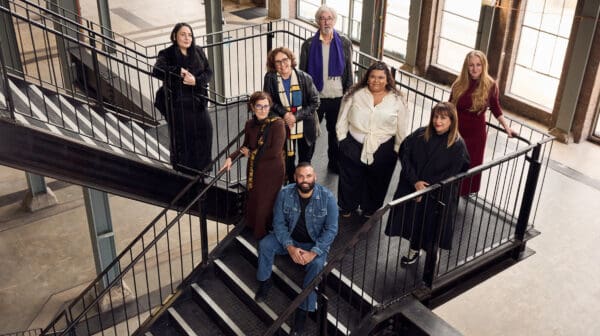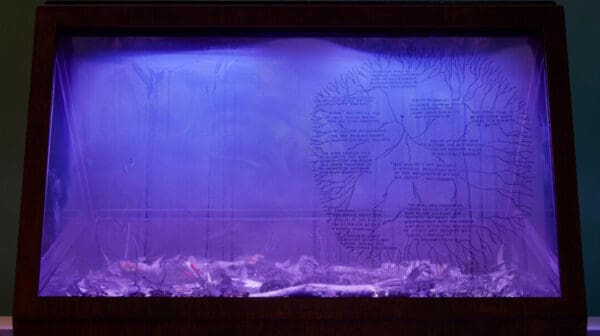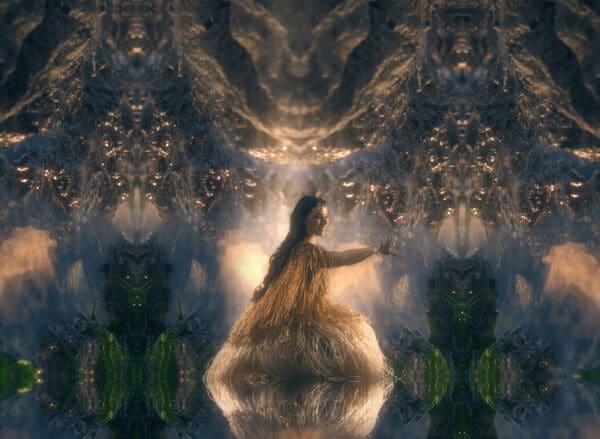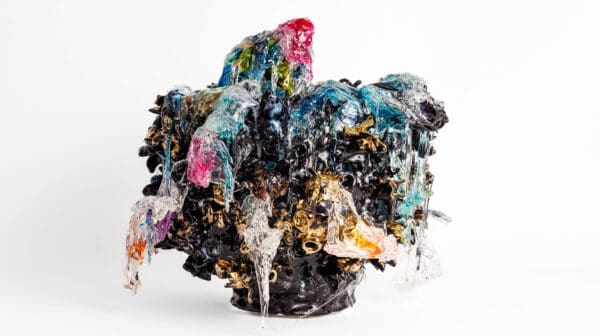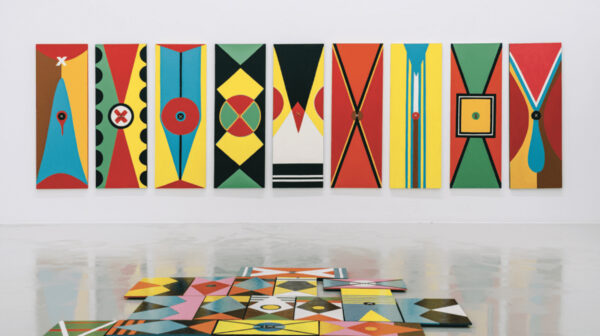Joel Sherwood Spring is a Wiradjuri ‘anti-disciplinary’ artist (based in Sydney on Gadigal land), whose work has garnered significant accolades in recent years following his earlier training in architectural education. He tells Art Guide Australia that the opening of his solo exhibition at Brisbane’s Institute of Modern Art (IMA) in October, “is exciting because, in every other context so far, I have been a participant in a group relation.”
The exhibition—titled Diggermode 2—includes video and sculpture, and will occupy the two front rooms of the IMA. It is a sequel, of sorts, to Sherwood Spring’s earlier video work, Diggermode. The earlier work, for which he won “the churchie” Emerging Art Prize—an Initiative of Brisbane’s Anglican Church Grammar (Churchie)—in 2023, explored his evolving ideas about living on sovereign land, Australia’s colonial situation and the resources removed from Country through extractive capitalism. His spatial sensibility sees the work interrogating what lies beneath the surface—be it minerals in the ground, individual identity or technological compromises.
Other exhibitions in which Sherwood Spring’s work has been seen include Future Remains: The 2024 Macfarlane Commissions at the Australian Centre for Contemporary Art, The 24th Biennale of Sydney (2024) and the 4th National Indigenous Art Triennial: Ceremony, National Gallery of Australia (2022). From October, another video, SETTLED, will show at Perth Institute of Contemporary Arts. He has just been announced as one of 24 artists selected for the 2026 Adelaide Biennial of Australian Art, titled Yield Strength (opening February 2026), which will feature work first seen at the IMA’s Diggermode 2.

These opportunities affirm a career segue that sees his ideas, about the intersection of land and capital, presented as art. It came about, he says, as “a pivot in the pandemic”.
“I had time during Covid—with institutions scrambling to develop programs for their communities. I’d already made work for the Bleed festival (an annual event since 2020 from Arts House and Campbelltown Arts Centre) which showed me another way of tackling the issues that interest me.” Since then, a series of medium- to large-scale commissions has sustained his practice.
Sherwood Spring was raised in Redfern and his art explores “the desire for Indigeneity globally and contextually in Australia, connected to the desire for minerals. The IMA project has been about finding meaningful, funny, interesting ways to draw out connections between those ideas, largely about how they connect to a conversation that people are familiar with, around identity and progressive identity formations in an information age.”
He titled the first video Diggermode after the colonial material processes formed by and facilitated by digging. He notes that, “Whether for gold or to till a field, digging requires physical labour. Twentieth century technological processes or information economies are still largely defined by some of these ideas. They translate and transmit themselves into
new modes but they’re similarly extractive practices. They traffic the same things in lots of ways. So it’s a diggermode.”
Diggermode 2 comprises four videos across the two spaces within an installation of sculptures and found/historical objects. The videos adopt the convention of ‘immediacy style’, a term coined by American literary scholar Anna Kornbluh which refers to the way smart phones may produce immediate content that is assumed genuine.
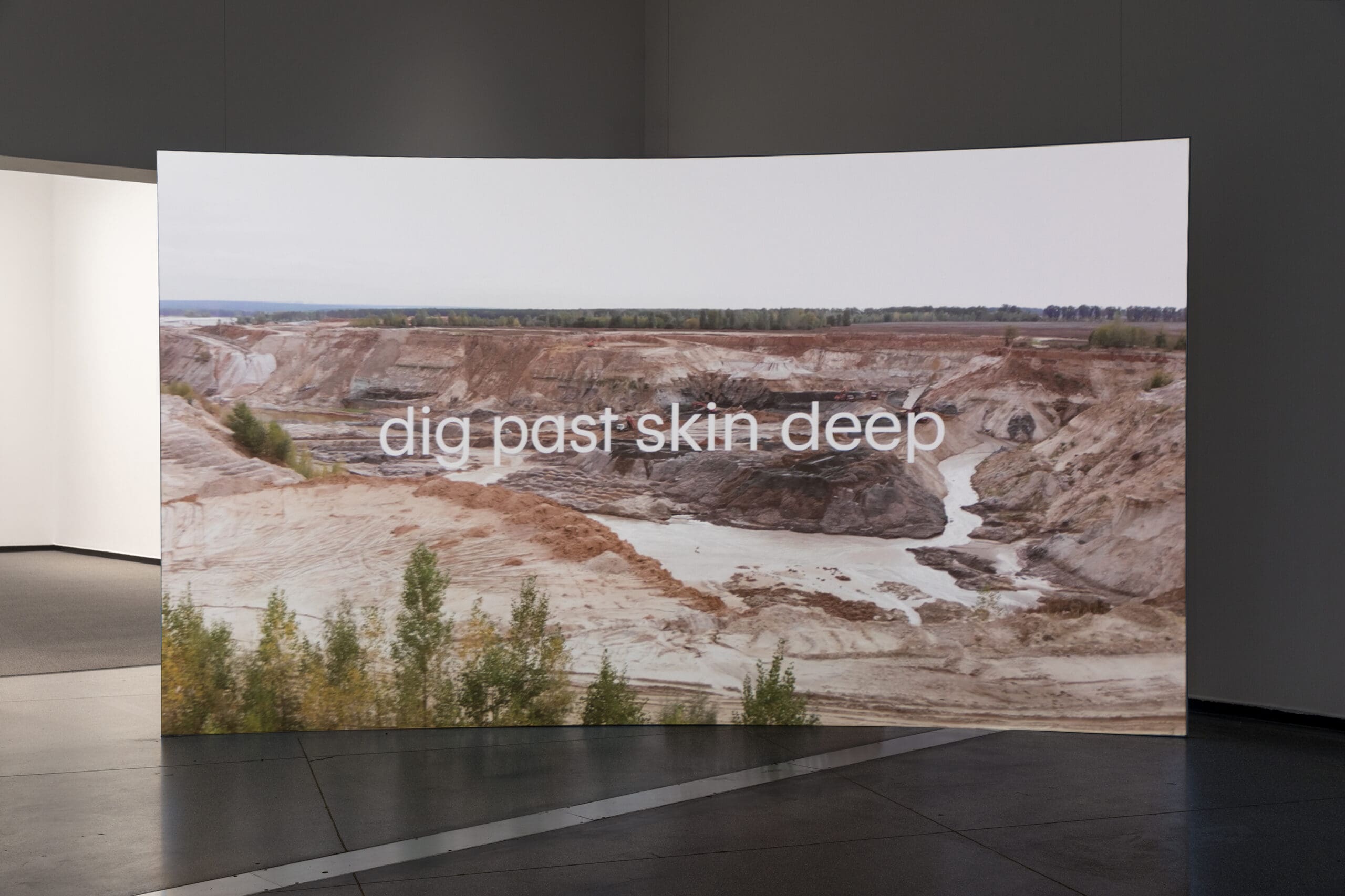
For Sherwood Spring, working in video offers an entrée, with accessible technologies and immediacy, to his ongoing fields of enquiry about identity and capital. The narratives connect to individual ‘lived experience’ testimonies and articulate his historical concerns about these industries. “Can you talk about the mental health of a FIFO [fly-in-fly-out] miner and deeper questions of precarity? Mined materials keep the Western world going in a way but are not incorporated into the story about the world. They’re objects in a story rather than subjects. While people articulate personal connections to Country, there’s, at the same time, a blindness to connection … I’m interested in how to incorporate narratives to make people empathetic toward these characters.”
Diggermode 2 includes a narrative about post-World War II soldier settlement in South Australia (and its contribution to financial monopolies), with the other imagined vignettes from the life of a contemporary air force drone pilot. The second room echoes the inside of a ‘donga’ (temporary accommodation used in mining and construction), using a Zoom
therapy session between a FIFO worker and an online, mine-subsidised therapist.
The IMA videos and their invented characters have a haunted and spooky reality, a vibe the artist says “is akin to Wake in Fright” (the 1961 novel by Kenneth Cook, and 1971 film). For Sherwood Spring, their subject includes the alienating aspects of technologies that define our lives, “showing the negative, inverse of these ideas. People are existing today in complete disconnection. We all want connection, safety, and to live a life in particular ways, yet these systems are built to ensure that you don’t, and can’t.”
Early in his career, Sherwood Spring adopted the ‘anti-disciplinary’ tag to avoid being pigeon-holed, aware that his work exists in contradistinction to many established narratives. Going forward he said, “I’m happy for that old artist description about me to exist even if I don’t really identify with it any more. It feels complicit really to declare yourself as anything.”
Settled
Perth Institute of Contemporary Arts
(Perth/Boorloo)
Until 21 December
Diggermode 2
Institute of Modern Arts
(Brisbane/Meanjin)
Until 20 December
Yield Strength, 2026 Adelaide Biennial of Australian Art
Art Gallery of South Australia
(Adelaide/Kaurna Country)
27 February—8 June 2026
This article was originally published in the November/December 2025 print edition of Art Guide Australia.

